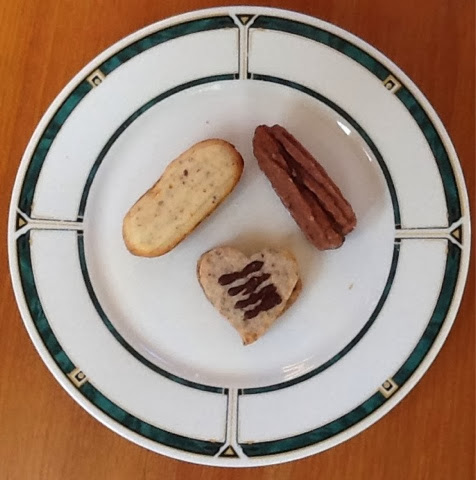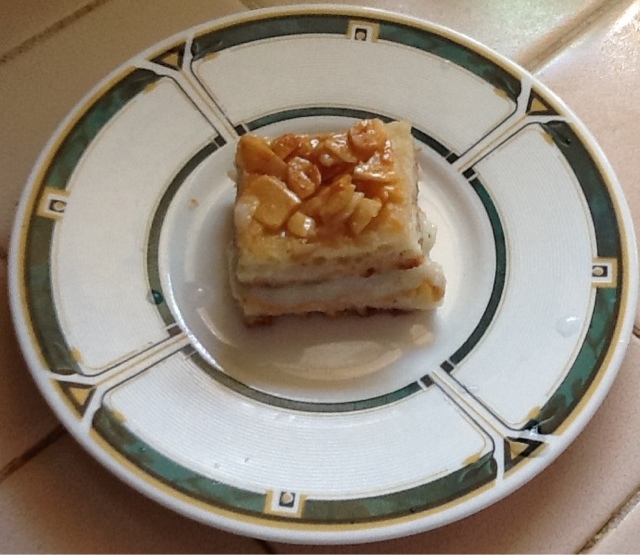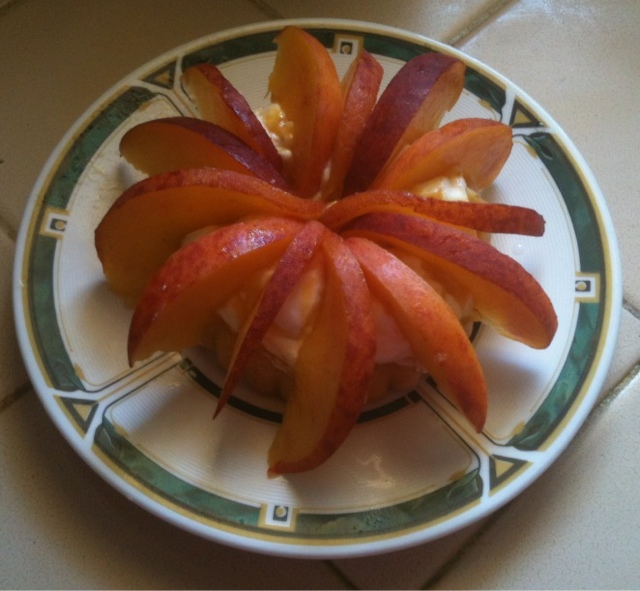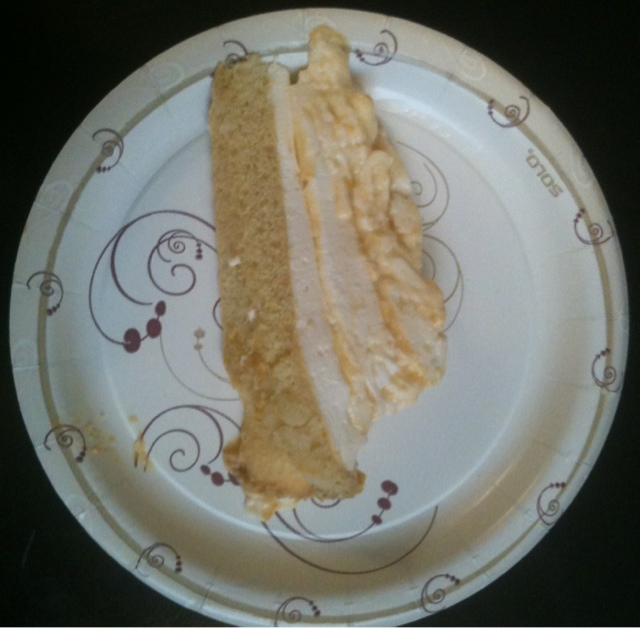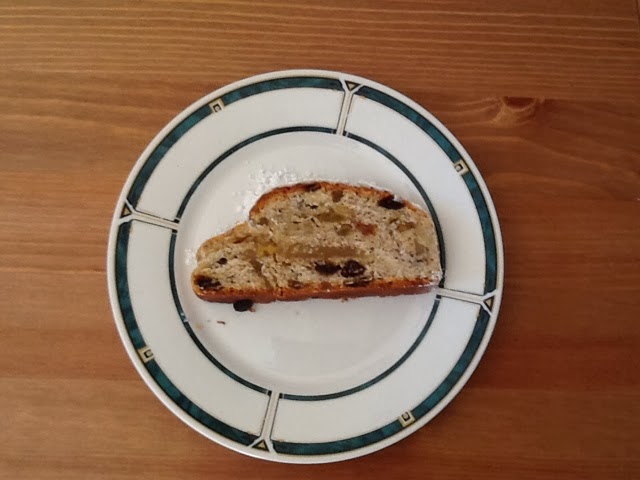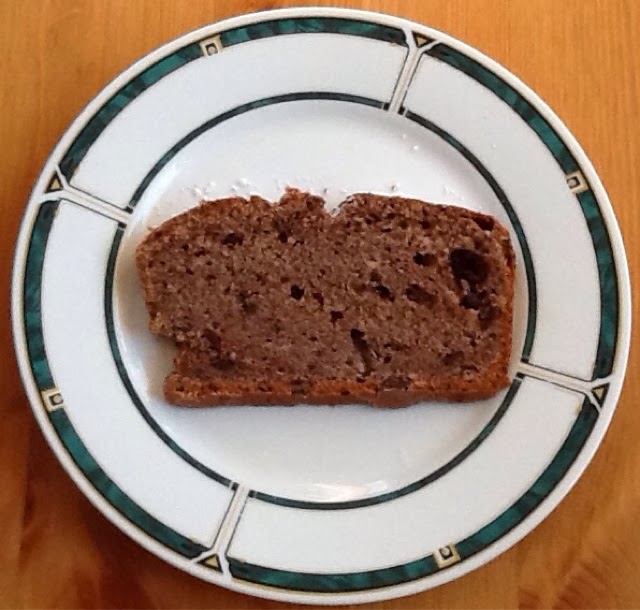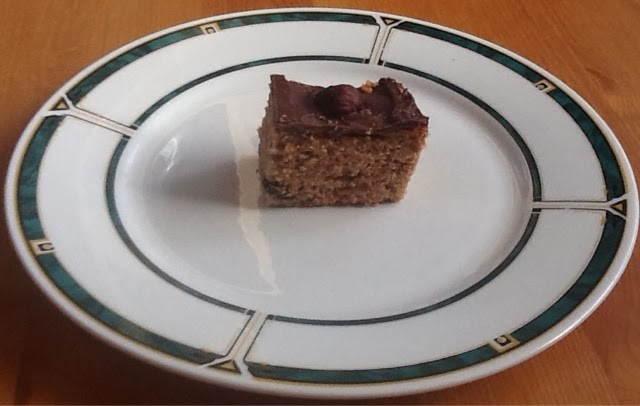A variation on this are Schokotatzen (chocolate claws), made with cocoa in the batter, and filled with Nutella and dipped in chocolate. Both types require a little skill because the batter has to be squeezed out of a piping bag.
Lastly, another family favorite are Nussherzen (nut hearts). This type contains hazelnut or walnut meal in the batter (and doesn't contain egg). In addition, they are filled with hazelnut cream, and either decorated with or dipped in chocolate.
Baerentatzen (Bear Claws)
Ingredients:
Baking sheet
Parchment paper
Batter:
250 g butter
175 g powdered sugar
2 packages vanilla sugar or 2 teaspoons vanilla aroma
1 egg
2 tablespoons milk
175 g flour
175 g potato starch
75 g almond, hazelnut or walnut meal
Filling:
Apricot jam
Glaze (optional)
250 g confectioner's sugar
30 g cocoa powder
3-5 tablespoons milk or hot water
25 g coconut oil
Preparation:
1. Using an electric hand mixer whisk butter until softened. First stir in sugar and vanilla sugar or vanilla aroma, then add in the egg.
2. In a separate bowl mix flour, potato starch and almond or nut meal. Add to batter.
3. Transfer the batter into a piping bag with a star-shaped opening. Squeeze little claws on parchment paper, and bake for 10-15 minutes at 180 degrees Celsius (350 F).
4. Remove cookies from oven, and let them cool down. Spread some apricot jam on the flat half of one cookie, then put a second cookie with the flat half on top.
5. Optional: Mix the ingredients for the glaze together. Dip one end of the sandwich cookie into the chocolate. Once the glaze has set, put cookies in a cookie box.
Schokotatzen (chocolate claws)
Ingredients:
Baking sheet
Parchment paper
Batter:
150 g butter
15 g marzipan (optional)
60 g powdered sugar
1 package vanilla sugar or 1 teaspoon vanilla aroma
1 egg yolk
2-3 tablespoons milk
225 g flour
2 tablespoons unsweetened cocoa powder
Filling:
Nutella
Glaze (optional)
250 g confectioner's sugar
30 g cocoa powder
3-5 tablespoons milk or hot water
25 g coconut oil
Preparation:
1. Preheat oven to 180 degrees Celsius (350 F). Using an electric hand mixer whisk butter, marzipan, powdered sugar and vanilla sugar or vanilla aroma until softened. Add egg yolk and milk and whisk well, then first add in flour, then cocoa powder.
2. Transfer the batter into a piping bag with a star-shaped opening. Squeeze little claws on parchment paper, and bake for 10-15 minutes at 180 degrees Celsius (350 F).
3. Remove cookies from oven, and let them cool down. Spread some Nutella on the flat half of one cookie, then put a second cookie with the flat half on top.
4. Optional: Mix the ingredients for the glaze together. Dip one end of the sandwich cookie into the chocolate. Once the glaze has set, put cookies in a cookie box.
Nussherzen (Nut hearts)
Ingredients:
Baking sheet
Parchment paper
Cookie cutters
Batter:
150 g flour
125 g butter
75 g sugar
1 package vanilla sugar or 1 teaspoon vanilla aroma
150 g hazelnut meal
2 tablespoons milk
Filling:
Nutella
Glaze (optional)
150 g chopped chocolate
10 g coconut oil
Preparation:
1. Sift flour into a bowl. Add all remaining ingredients and knead with the knead hooks of an electric hand mixer until a dough has formed.
2. Refrigerate batter for 30 minutes or overnight.
3. Roll dough out flat until about 2-3 mm or 1/8" thick. For best results roll out the dough without flour in between two sheets of parchment paper. Cut out cookies with a smaller size cookie cutter (I used a heart shape, but you can use any cookie cutter), put on parchment paper, and bake for about 10 minutes at 180 degrees Celsius (350 F).
4. Remove cookies from oven, and let them cool down. Spread some Nutella on one cookie, then put a second cookie on top.
5. Melt chocolate and coconut oil in microwave or in a bowl over warm water.
Sprinkle chocolate with a fork on cookies or dip one cookie half into chocolate. Once the glaze has set, put cookies in a cookie box.
Cookies displayed in photo:
Top left: Baerentatze (Bear Claw)
Top right: Schokotatze (Chocolate Claw)
Bottom middle: Nussherz (Nut Heart)

